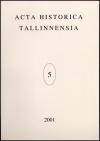Seltsi- ja rahvamajad – Eesti uus ruumiline kultuurimudel lääneliku moderniseerumise ning kujuneva kultuuripoliitika kontekstis
Community Houses – A New Spatial Model for Estonian Culture in the Context of the Western Modernization and Emerging Politics of Culture
Author(s): Egge Kulbok-LattikSubject(s): Cultural history, Civil Society, Cultural Anthropology / Ethnology, 19th Century, Pre-WW I & WW I (1900 -1919), Politics and Identity
Published by: Eesti Teaduste Akadeemia Kirjastus
Summary/Abstract: If in a wide anthropological sense culture can be viewed as an all-encompassing meaning-making system of society, then the institutional meaning-making system is guided by the politics of culture in society. The institutional meaning-making system is shaped by the historically formed values as well as by the prevailing ideological and political discourse of the era. Considering Estonian historical experience, we can talk about cultural and national emancipation, which by nature is a cultural political phenomenon. Implicit cultural policy of Estonian civil society of 1860–1918 was based on self-perfection aspirations, which were inherent to the Enlightenment (Bildung) ethos of the Western Modernization. In this developmental path an important role was played by private property, which motivated to strive for self-perfection, to educate the community and thereby promote cultural society. As a result of Russian absolutist central power and the socio-economic situation dominated by the Baltic German nobility, the ‘awakened peasants’ were highly motivated to build up their cultural and public sphere with the intention of improving the status of Estonians in society, as scholars have pointed out. Thus, community houses were built by ordinary people, aiming to offer a space for new types of cultural activities: choirs, plays, orchestras, libraries and public festivities for local communities all over the current territory of Estonia during the tsarist empire from the 1880s onwards. These cultural hubs became pre-state cultural institutions with civilizing aims (Bildung) for Estonian communities, where the development of a wider public sphere evolved in the circumstances of being under the rule of Baltic German landlords and the restrictive tsarist state. However, with the construction of community houses Estonians, as a colonized ethnic group with the lowest status in society, created not only a cultural and political public, but also a new spatial model for their cultural development with the specific opera-theatrical room-programme, with the stage, hall, buffet, library room etc. New cultural practices became attainable for everyone (masters, servants, men, women) from the 1880s onwards. Since then, historical research and statistics reveal constantly increasing cultural participation of Estonians, until it is possible to speak about the national cultural identity of Estonians by the first half of the 20th century.
Journal: Acta Historica Tallinnensia
- Issue Year: 2016
- Issue No: 22
- Page Range: 41-66
- Page Count: 26
- Language: Estonian

